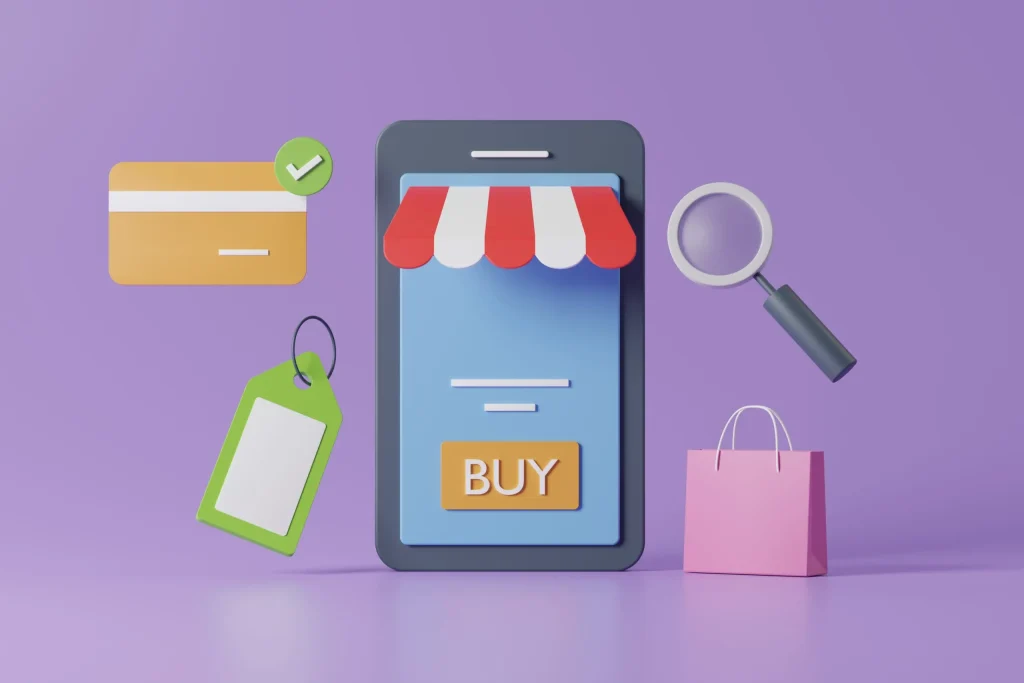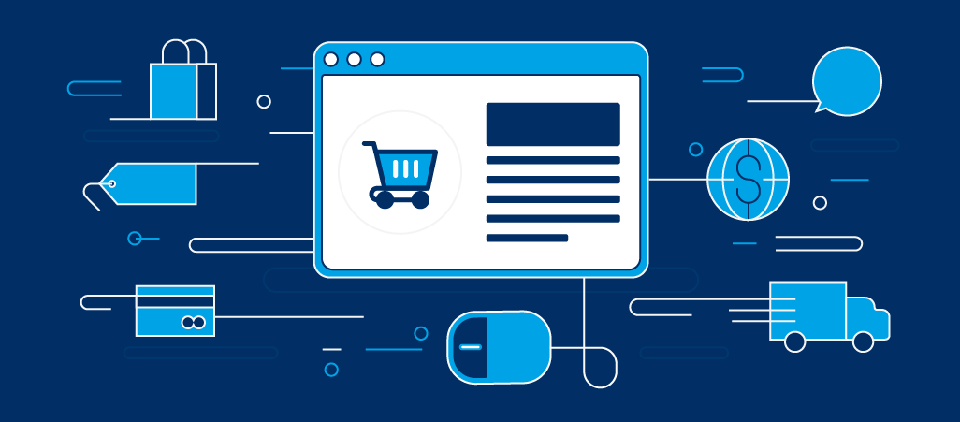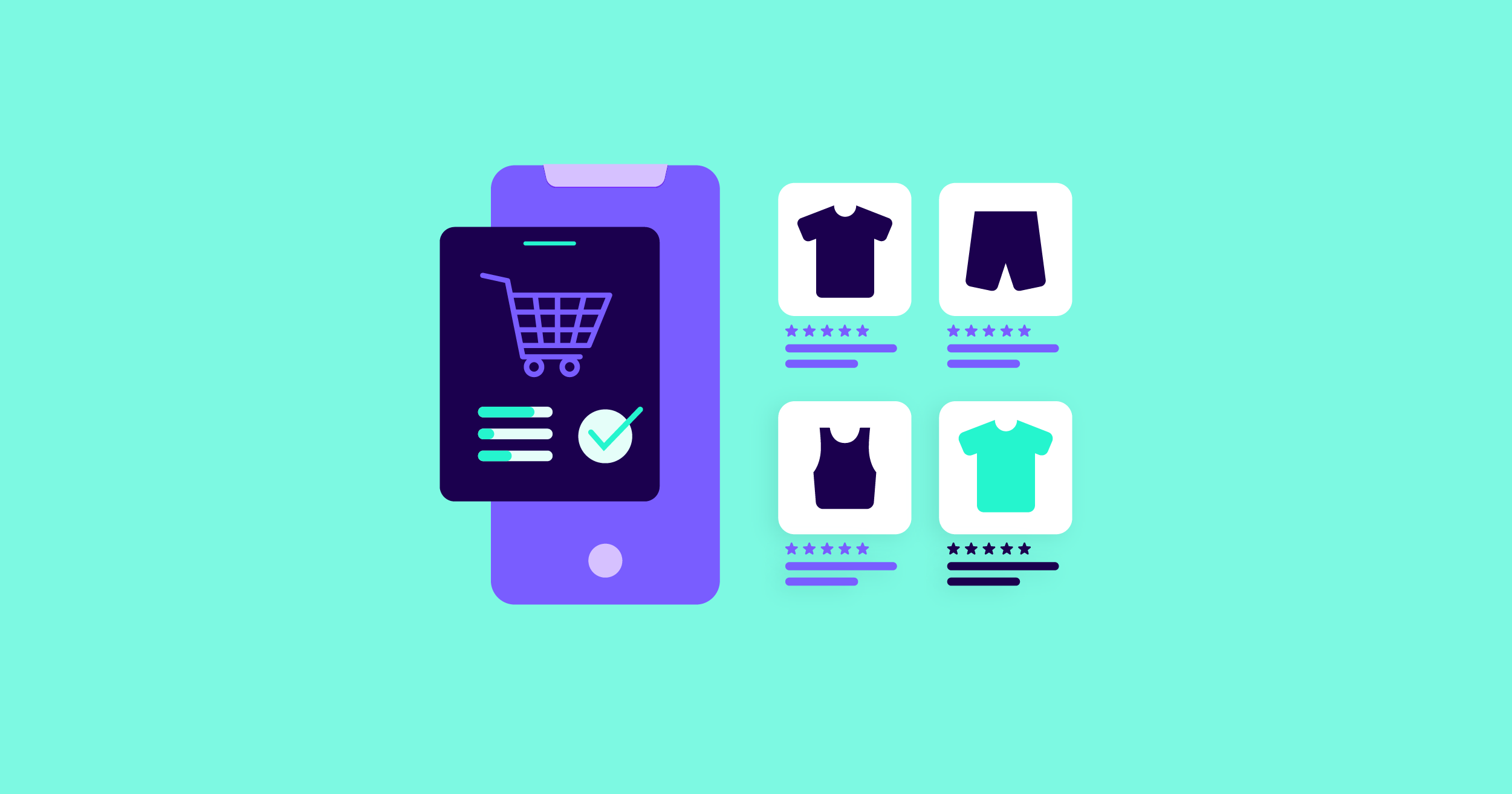eCommerce Marketing: 8+ Best Strategies
In today’s digital world, ecommerce has become a cornerstone of the global economy. Whether you’re selling physical products, digital goods, or services, your ability to market your ecommerce business effectively can make or break your success. Ecommerce marketing is an essential aspect of online business growth, and understanding how to navigate it can help you reach your target audience, increase sales, and build a loyal customer base.
In this article, we’ll dive deep into ecommerce marketing strategies, tools, and techniques that can help you maximize your online presence and sales. From understanding the basics to implementing advanced strategies, we’ll cover it all.
What is Ecommerce Marketing?
Ecommerce marketing refers to the strategies and techniques used to promote an online store and its products or services. The goal is to attract potential customers, convert them into buyers, and retain them for future purchases. Ecommerce marketing involves a combination of digital marketing tactics, including search engine optimization (SEO), content marketing, social media marketing, paid advertising, email marketing, and more.
The primary objective of ecommerce marketing is to drive traffic to your online store, increase conversions, and build brand awareness. Whether you’re running a small business or a large enterprise, the right ecommerce marketing strategies can help you stand out in a crowded market and achieve long-term success.
The Core Components of Ecommerce Marketing
To build an effective ecommerce marketing strategy, you need to understand the key components that contribute to ecommerce marketing success. These include:
1. Website Optimization
Your ecommerce marketing website is the foundation of your ecommerce marketing efforts. A well-designed, user-friendly, and fast-loading website is essential for converting visitors into customers. Here are a few tips for optimizing your website:
- Mobile Optimization: With mobile traffic accounting for a significant portion of online sales, it’s crucial that your website is mobile-friendly. Ensure that your website’s design adapts to different screen sizes and provides a seamless shopping experience.
- User Experience (UX): A smooth user experience encourages customers to stay longer on your site and complete their purchases. Make navigation intuitive, streamline the checkout process, and ensure that product information is clear and easy to find.
- Fast Load Times: Slow-loading websites can frustrate visitors and lead to higher bounce rates. Aim for fast page load times by optimizing images, reducing unnecessary scripts, and using a reliable hosting provider.
2. Search Engine Optimization (SEO)
SEO is one of the most effective ways to drive organic traffic to your ecommerce marketing store. By optimizing your website for search engines, you can increase your visibility and attract potential customers. Here’s how to implement SEO for ecommerce marketing:
- Keyword Research: Identify the keywords your target audience is searching for. Use tools like Google Keyword Planner, Ahrefs, or SEMrush to find high-traffic, relevant keywords for your products and category pages.
- On-Page SEO: Optimize your product pages with relevant keywords in titles, descriptions, and image alt text. Ensure that your website’s structure is easy to crawl for search engines, and include internal links to guide users to related products.
- Content Marketing: Create valuable content, such as blog posts, guides, and videos, to engage your audience and improve your website’s SEO. High-quality content helps establish your brand as an authority in your niche and attracts backlinks from other sites.
- Technical SEO: Ensure that your website is technically sound by optimizing site speed, using clean URLs, and implementing structured data (schema markup) to help search engines understand your content.
3. Social Media Marketing
Social media is a powerful tool for ecommerce marketing, allowing you to connect with your audience, build brand awareness, and drive traffic to your website. Here’s how to leverage social media for ecommerce marketing:
- Platform Selection: Choose the social media platforms that align with your target audience. Instagram and Facebook are popular for B2C ecommerce, while LinkedIn can be more effective for B2B businesses. TikTok, Pinterest, and YouTube also offer unique opportunities for ecommerce marketing.
- Content Creation: Post a mix of content types, including product images, customer testimonials, behind-the-scenes footage, and educational content. Use engaging visuals, videos, and stories to capture attention.
- Paid Advertising: Social media platforms offer powerful ad targeting options that allow you to reach specific demographics based on interests, behaviors, and location. Facebook and Instagram ads, for example, can be highly effective for driving sales and retargeting website visitors.
- Influencer Marketing: Partner with influencers who have a strong following in your niche. Influencers can promote your products to their audience, increasing brand awareness and driving traffic to your store.
4. Email Marketing
Email marketing remains one of the most effective channels for ecommerce marketing businesses to nurture relationships with customers and drive sales. Here’s how to make the most of email ecommerce marketing:
- Email List Building: Offer incentives such as discounts, free shipping, or exclusive content to encourage visitors to sign up for your email list. Use pop-ups, exit-intent forms, and lead magnets to capture email addresses.
- Segmentation: Segment your email list based on customer behavior, purchase history, or demographics. This allows you to send personalized, relevant content that resonates with each group.
- Email Campaigns: Send regular newsletters with product updates, promotions, and content that adds value to your subscribers. Include clear calls to action (CTAs) that drive traffic to your store.
- Abandoned Cart Emails: Set up automated abandoned cart emails to remind customers of the products they left behind. Offering a discount or incentive can encourage them to complete their purchase.
5. Paid Advertising
Paid advertising is a fast way to drive traffic to your ecommerce store and increase sales. There are several types of paid advertising strategies you can use:
- Google Ads: Google’s paid search ads allow you to target customers based on specific search queries. You can run text ads, shopping ads, or display ads to reach your target audience.
- Facebook and Instagram Ads: These platforms allow you to create highly targeted ads based on user demographics, interests, and behaviors. You can run carousel ads, video ads, or dynamic product ads to showcase your products.
- Retargeting Ads: Retargeting ads target customers who have visited your website but didn’t make a purchase. By showing them ads for the products they viewed, you can encourage them to return and complete their transaction.
6. Customer Reviews and Testimonials
Customer reviews and testimonials play a significant role in ecommerce marketing. Positive reviews can help build trust with potential customers and influence their purchasing decisions. Here’s how to leverage reviews for ecommerce marketing:
- Request Reviews: After a customer makes a purchase, ask them to leave a review. You can send follow-up emails or offer incentives like discounts on future purchases.
- Display Reviews Prominently: Showcase customer reviews on your product pages to provide social proof and encourage others to buy. Use star ratings and written testimonials to highlight positive feedback.
- Respond to Reviews: Engage with customers by responding to their reviews, whether positive or negative. This shows that you care about customer feedback and helps build a relationship with your audience.
7. Referral Marketing
Referral marketing encourages your existing customers to refer new customers to your store in exchange for rewards or incentives. This strategy leverages word-of-mouth marketing to expand your customer base. Here’s how to implement referral ecommerce marketing:
- Referral Programs: Create a referral program where customers earn rewards (discounts, free products, etc.) for referring friends and family to your store. Make it easy for customers to share referral links via email or social media.
- Incentivize Referrals: Offer incentives to both the referrer and the referred customer. For example, both could receive a discount on their next purchase when the referral makes a purchase.
- Track Referrals: Use referral ecommerce marketing software to track referrals and ensure that rewards are given accurately. This will help you measure the success of your program and optimize it for better results.
8. Content Marketing
Content marketing is an essential strategy for driving organic traffic to your ecommerce marketing store. By creating valuable, informative content, you can attract and engage potential customers. Here’s how to use content for ecommerce marketing:
- Blogging: Start a blog and publish articles related to your industry, products, and customer interests. This will help improve your SEO, establish your brand as an authority, and drive traffic to your store.
- Videos: Create videos showcasing your products, offering tutorials, or sharing behind-the-scenes content. Videos are highly engaging and can be shared across multiple platforms, including YouTube, Instagram, and TikTok.
- Infographics: Infographics are a visually appealing way to present complex information. Use them to share statistics, product comparisons, or step-by-step guides related to your products or industry.
9. Analytics and Optimization
Finally, tracking and analyzing your ecommerce marketing efforts is crucial for continuous improvement. Use tools like Google Analytics, Facebook Insights, and email marketing analytics to monitor performance and optimize your strategies.
- Track Key Metrics: Monitor important metrics such as website traffic, conversion rate, average order value, customer acquisition cost, and return on ad spend (ROAS). These metrics will help you understand what’s working and what needs improvement.
- A/B Testing: Conduct A/B tests on your website, ads, and email campaigns to determine which variations perform best. Test elements such as headlines, images, CTAs, and pricing to optimize your marketing efforts.
- Optimize Based on Data: Use the insights from your analytics to refine your ecommerce marketing strategy. Continuously test and optimize your campaigns to ensure that you’re maximizing your ROI.
Conclusion
Ecommerce marketing is a multifaceted approach that requires a combination of strategies to drive traffic, increase conversions, and build long-term customer relationships. By focusing on website optimization, SEO, social media marketing, email marketing, paid advertising, and customer reviews, you can create a comprehensive marketing plan that sets your ecommerce marketing business up for success.
Remember, ecommerce marketing is not a one-time effort—it’s an ongoing process that requires constant testing, analysis, and adaptation. Stay up-to-date with the latest trends and technologies, and always be willing to adjust your approach based on customer feedback and data. By doing so, you’ll position your ecommerce business for sustained growth and success in the competitive online marketplace.

Advanced Ecommerce Marketing Strategies
While the basics of ecommerce marketing are essential, there are advanced strategies that can help take your marketing efforts to the next level. These strategies often involve more sophisticated tools and techniques that can provide a competitive edge in the ever-evolving digital landscape.
1. Personalization and Customization
Personalization has become a key factor in driving customer satisfaction and increasing conversions in ecommerce. By tailoring the shopping experience to individual customers, you can enhance engagement, build loyalty, and boost sales.
- Product Recommendations: Use customer data and browsing behavior to recommend personalized products on your website. This can be done through algorithms that suggest items based on past purchases or similar user profiles.
- Dynamic Content: Customize your website’s content based on user behavior. For instance, if a customer has previously browsed winter coats, show them related items like scarves or gloves when they return to your site.
- Email Personalization: Personalize email campaigns by addressing customers by name and offering them product recommendations based on their browsing or purchase history. Personalized emails have higher open rates and drive more conversions.
2. Video Marketing
Video marketing is one of the most engaging and effective ways to showcase your products and connect with your audience. Consumers are more likely to purchase products after watching a video, making it a powerful tool for ecommerce marketing.
- Product Demos: Create video demonstrations that show how your products work or highlight their unique features. These videos can help customers understand the value of your products and make them more likely to buy.
- Customer Testimonials: Feature customer reviews and testimonials in video format. Video testimonials add authenticity and credibility to your brand, making it easier for potential customers to trust your business.
- Live Streaming: Live streaming has gained popularity as a way to engage with customers in real-time. You can use platforms like Instagram Live, Facebook Live, or YouTube Live to showcase new products, answer customer questions, and promote limited-time offers.
3. Voice Search Optimization
With the rise of voice-activated devices like Amazon Echo, Google Home, and smartphones, voice search is becoming an increasingly important factor in ecommerce marketing. Optimizing your website for voice search can help you reach customers who prefer to search by voice rather than typing.
- Long-Tail Keywords: Voice searches tend to be more conversational, so it’s important to focus on long-tail keywords and natural language phrases. For example, instead of targeting “buy running shoes,” focus on “where can I buy the best running shoes near me?”
- Local SEO: Many voice searches are local in nature. Optimize your website for local SEO by including location-based keywords and ensuring that your business is listed on Google My Business and other local directories.
- FAQ Pages: Voice search queries often come in the form of questions. By creating a comprehensive FAQ page that answers common customer questions, you can increase your chances of appearing in voice search results.
4. Artificial Intelligence (AI) and Chatbots
Artificial intelligence (AI) is transforming the way ecommerce businesses interact with customers. AI-powered tools like chatbots and recommendation engines can enhance the shopping experience and improve customer service.
- Chatbots: Implementing AI-driven chatbots on your website can help you provide instant support to customers. Chatbots can answer frequently asked questions, assist with product selection, and guide customers through the checkout process.
- Product Recommendations: AI algorithms can analyze customer data and provide personalized product recommendations based on individual preferences, browsing history, and purchase behavior.
- Predictive Analytics: AI can help predict future trends and customer behavior by analyzing past data. This allows you to optimize your marketing efforts, such as sending targeted emails or running promotions based on predicted demand.
5. Affiliate Marketing
Affiliate marketing is a performance-based strategy where you partner with individuals or other businesses to promote your products in exchange for a commission on sales. This can be a cost-effective way to increase your reach and drive traffic to your ecommerce store.
- Affiliate Networks: Join affiliate marketing networks like ShareASale, Rakuten, or Amazon Associates to connect with influencers and bloggers who can promote your products to their audience.
- Tracking and Analytics: Use affiliate tracking software to monitor the performance of your affiliates and ensure that they’re driving quality traffic to your site. This will help you optimize your affiliate program and reward top performers.
- Create Affiliate Incentives: Offer attractive commissions or bonuses to motivate affiliates to promote your products more aggressively. You can also provide affiliates with marketing materials like banners, links, and product images to make it easier for them to promote your store.
6. International Ecommerce Marketing
Expanding your ecommerce business internationally can open up new markets and opportunities for growth. However, marketing to international audiences requires a tailored approach to address cultural, language, and legal differences.
- Localization: Localize your website to cater to the specific needs of international customers. This includes translating content into the local language, adjusting pricing to local currencies, and offering region-specific payment methods.
- Cultural Sensitivity: Understand cultural differences and adapt your marketing campaigns to resonate with international audiences. For example, avoid using imagery or phrases that may be considered offensive in certain cultures.
- International SEO: Optimize your website for international SEO by using country-specific domains (e.g., .co.uk for the UK) and targeting local keywords. You should also ensure that your website is accessible and fast-loading in different regions.
7. Omnichannel Marketing
Omnichannel marketing is the practice of providing a seamless and integrated customer experience across multiple channels, both online and offline. Customers expect to interact with brands across various touchpoints, and omnichannel marketing ensures that they have a consistent experience regardless of the channel.
- Unified Messaging: Ensure that your brand’s messaging is consistent across all platforms, including your website, social media, email campaigns, and physical stores (if applicable). This helps build brand recognition and trust.
- Cross-Channel Promotions: Run cross-channel campaigns that encourage customers to engage with your brand on multiple platforms. For example, you can promote a limited-time offer on social media and then follow up with an email reminder.
- Customer Data Integration: Use customer relationship management (CRM) tools to integrate customer data from various touchpoints. This allows you to provide personalized experiences based on a customer’s interactions with your brand across different channels.
8. Subscription Models
Subscription-based ecommerce models have become increasingly popular in recent years, offering customers convenience and value while providing businesses with predictable revenue streams. Subscription models are ideal for products that customers need to repurchase regularly, such as beauty products, food, or personal care items.
- Subscription Boxes: Offer curated subscription boxes that deliver a selection of products to customers on a regular basis. This model is particularly effective for niche markets and can help build customer loyalty.
- Recurring Orders: Allow customers to set up recurring orders for products they need regularly. This is especially useful for consumables like vitamins, toiletries, or pet supplies.
- Discounts and Incentives: Offer discounts or exclusive perks to customers who subscribe to your service. This can help increase sign-ups and incentivize customers to commit to longer subscription periods.
9. Customer Retention and Loyalty Programs
While attracting new customers is important, retaining existing customers is just as crucial for long-term success. A loyal customer base can help you achieve consistent sales and reduce marketing costs over time.
- Loyalty Programs: Create a loyalty program that rewards customers for repeat purchases, referrals, and engagement with your brand. Offer points, discounts, or exclusive access to products in exchange for loyalty.
- Customer Engagement: Stay engaged with your customers through email newsletters, social media, and personalized offers. Make them feel valued by acknowledging their preferences and providing them with relevant recommendations.
- Post-Purchase Experience: Focus on delivering an excellent post-purchase experience. Send follow-up emails to thank customers for their purchase, request feedback, and offer incentives for future purchases.
10. Data-Driven Marketing
Data is a valuable asset for any ecommerce business. By leveraging data analytics, you can gain insights into customer behavior, preferences, and trends, allowing you to make informed decisions and optimize your marketing efforts.
- Customer Insights: Use analytics tools to track customer behavior on your website, such as which products they view, how long they stay on your site, and where they drop off in the sales funnel. This information can help you improve your website’s design and user experience.
- A/B Testing: Continuously test different marketing strategies, such as ad creatives, email subject lines, or product descriptions, to see what resonates best with your audience. Use A/B testing tools to run experiments and analyze results.
- Predictive Analytics: Leverage predictive analytics to forecast customer behavior and trends. This can help you plan marketing campaigns, optimize inventory management, and personalize offers to maximize sales.
Conclusion
Ecommerce marketing is a dynamic and multifaceted discipline that requires a strategic approach and constant adaptation. By combining foundational tactics with advanced strategies, you can create a comprehensive marketing plan that drives traffic, boosts conversions, and fosters customer loyalty.
Remember that success in ecommerce marketing doesn’t happen overnight. It requires continuous effort, testing, and optimization. Stay up-to-date with the latest trends, embrace new technologies, and always focus on delivering exceptional value to your customers. With the right strategies in place, your ecommerce business can thrive in the competitive online marketplace.

The Role of Customer Experience in Ecommerce Marketing
A seamless and enjoyable customer experience (CX) is a critical element in ecommerce marketing. As the online marketplace becomes increasingly competitive, businesses must focus on creating a positive and personalized experience for their customers to stand out. A great customer experience can lead to increased customer satisfaction, loyalty, and repeat business.
1. Streamlining the Checkout Process
The checkout process is one of the most critical stages of the customer journey. A complicated or lengthy checkout process can lead to cart abandonment, which is one of the biggest challenges ecommerce businesses face.
- Simplified Checkout: Make the checkout process as simple as possible. Offer a one-page checkout where customers can enter all necessary details without having to navigate through multiple pages.
- Guest Checkout: Allow customers to complete their purchase without forcing them to create an account. While creating an account can be beneficial for your business, a guest checkout option reduces friction and encourages more customers to finalize their purchase.
- Multiple Payment Options: Offer a variety of payment methods, including credit cards, PayPal, Apple Pay, Google Pay, and even cryptocurrencies if relevant. Providing multiple payment options ensures that customers can choose the method they are most comfortable with.
- Progress Indicators: Use progress indicators to show customers where they are in the checkout process. This helps reduce anxiety and provides a sense of control, encouraging them to complete their purchase.
2. Fast and Reliable Shipping
Shipping is a key factor in customer satisfaction. Offering fast, affordable, and reliable shipping options can make a significant difference in the overall customer experience and can directly impact conversion rates.
- Free Shipping: Offering free shipping, even if it’s conditional (e.g., for orders over a certain amount), can be a strong incentive for customers to complete their purchase. Free shipping is one of the most effective ways to reduce cart abandonment and increase sales.
- Multiple Shipping Options: Provide customers with a choice of shipping options, such as standard, expedited, or same-day delivery. Some customers may be willing to pay more for faster shipping, while others may prefer a more economical option.
- Real-Time Tracking: Enable customers to track their orders in real time. This transparency helps build trust and reduces uncertainty, as customers can see exactly where their package is during transit.
3. Customer Support and Communication
Exceptional customer support is essential for ensuring a positive customer experience. Customers want to feel valued and heard, especially when they have questions or issues regarding their orders.
- Live Chat Support: Implement live chat support on your website to provide instant assistance to customers. Live chat allows you to resolve customer queries in real time, improving customer satisfaction and reducing the likelihood of cart abandonment.
- Self-Service Options: Offer a comprehensive FAQ section, knowledge base, or video tutorials to help customers find answers to common questions on their own. Empowering customers with self-service options can save them time and improve their overall experience.
- Omnichannel Support: Provide support across multiple channels, including email, phone, social media, and messaging apps like WhatsApp. This ensures that customers can reach out to you in the way that’s most convenient for them.
4. Post-Purchase Experience
The customer journey doesn’t end after the purchase. In fact, the post-purchase experience is just as important for fostering loyalty and encouraging repeat business for ecommerce marketing.
- Order Confirmation and Updates: Send order confirmation emails or text messages immediately after a customer completes a purchase. Include details such as the expected delivery date, tracking number, and customer service contact information.
- Follow-Up Emails: After the product has been delivered, send a follow-up email to ask for feedback, encourage product reviews, and offer related products or promotions. This shows that you value the customer’s opinion and helps build a lasting relationship.
- Loyalty Rewards: Encourage customers to return by offering loyalty rewards for repeat purchases. This can include earning points for every purchase, which can later be redeemed for discounts or free products.
Leveraging Data for Ecommerce Marketing Success
In the digital age, data is one of the most valuable assets a business can have. Ecommerce marketing businesses generate vast amounts of data, from customer behavior and preferences to purchase history and website analytics. Leveraging this data effectively can help optimize your marketing strategies and improve decision-making.
1. Customer Segmentation
Customer segmentation is the practice of dividing your customer base into distinct groups based on shared characteristics, such as demographics, purchase behavior, or engagement levels. By segmenting your customers, you can tailor your marketing messages and offers to meet the specific needs of each group.
- Behavioral Segmentation: Group customers based on their behavior, such as frequent buyers, first-time visitors, or cart abandoners. This allows you to create targeted campaigns, such as offering discounts to first-time buyers or sending retargeting ads to cart abandoners.
- Demographic Segmentation: Segment customers based on demographic factors like age, gender, location, and income. This enables you to personalize your marketing messages and offers based on the specific preferences and needs of each group.
- Psychographic Segmentation: Segment customers based on their interests, values, and lifestyle. This helps you create highly targeted campaigns that resonate with customers on a deeper level, increasing the likelihood of conversions.
2. Predictive Analytics
Predictive analytics uses historical data and machine learning algorithms to forecast future trends and behaviors. By leveraging predictive analytics, you can gain insights into which products are likely to be in demand, when customers are most likely to make a purchase, and how to optimize your ecommerce marketing efforts.
- Demand Forecasting: Predict which products are likely to be popular during specific seasons or events. This allows you to adjust your inventory and marketing strategies accordingly, ensuring that you have the right products available at the right time.
- Customer Lifetime Value (CLV): Use predictive analytics to estimate the lifetime value of a customer. By identifying high-value customers early, you can tailor your marketing efforts to retain these customers and increase their long-term value.
- Churn Prediction: Predict which customers are at risk of leaving your brand based on their behavior and engagement patterns. This allows you to take proactive measures, such as offering personalized discounts or incentives, to retain those customers.
3. A/B Testing and Optimization
A/B testing is the process of comparing two or more variations of an ecommerce marketing element (such as a website page, ad, or email) to determine which one performs better. By continuously testing and optimizing your ecommerce marketing efforts, you can ensure that you’re maximizing your ROI and providing the best possible experience for your customers.
- Website Optimization: Test different versions of your website’s landing pages, product pages, and checkout process to see which one converts better. This could include testing different headlines, images, CTAs, or page layouts.
- Email Campaigns: Test different subject lines, email copy, and visuals to determine which version resonates most with your audience. A/B testing your emails can help you increase open rates, click-through rates, and conversions.
- Ad Campaigns: Test different ad creatives, targeting options, and bidding strategies to find the most effective combination for driving traffic and sales. A/B testing can help you optimize your paid advertising campaigns for maximum impact.
Sustainability in Ecommerce Marketing
As consumers become more environmentally conscious, sustainability is becoming an increasingly important factor in ecommerce marketing. Businesses that prioritize sustainability and ethical practices can differentiate themselves from competitors and appeal to eco-conscious consumers.
1. Eco-Friendly Packaging
Offer eco-friendly packaging options for your products. Use recyclable, biodegradable, or reusable materials for your packaging to reduce your environmental impact. Highlight these efforts on your website and in your marketing materials to appeal to environmentally conscious customers.
2. Sustainable Product Sourcing
Consider sourcing products from ethical and sustainable suppliers. This includes using materials that are eco-friendly, ensuring fair labor practices, and supporting local or small-scale artisans. Transparently communicate your sourcing practices to customers to build trust and demonstrate your commitment to sustainability.
3. Carbon Offsetting and Green Initiatives
Consider investing in carbon offset programs or other green initiatives to reduce your business’s environmental footprint. You can also offer customers the option to contribute to sustainability efforts by adding a small donation at checkout to support environmental causes.
Conclusion
Ecommerce marketing is a dynamic and multifaceted field that requires a combination of strategic planning, data-driven insights, and a focus on customer experience. By leveraging advanced ecommerce marketing strategies such as personalization, video marketing, and AI, businesses can stand out in a crowded marketplace and build long-term relationships with their customers.
In addition to these advanced tactics, ensuring that the customer experience is seamless, efficient, and enjoyable is essential for driving conversions and fostering loyalty. From optimizing your website and checkout process to providing exceptional customer support and offering personalized post-purchase communication, every aspect of the customer journey should be carefully considered.
As the ecommerce marketing landscape continues to evolve, businesses must stay ahead of the curve by embracing new technologies, testing different strategies, and prioritizing sustainability. By doing so, ecommerce marketing businesses can create a positive and lasting impact on their customers, ultimately driving growth and success in an increasingly competitive online marketplace.







